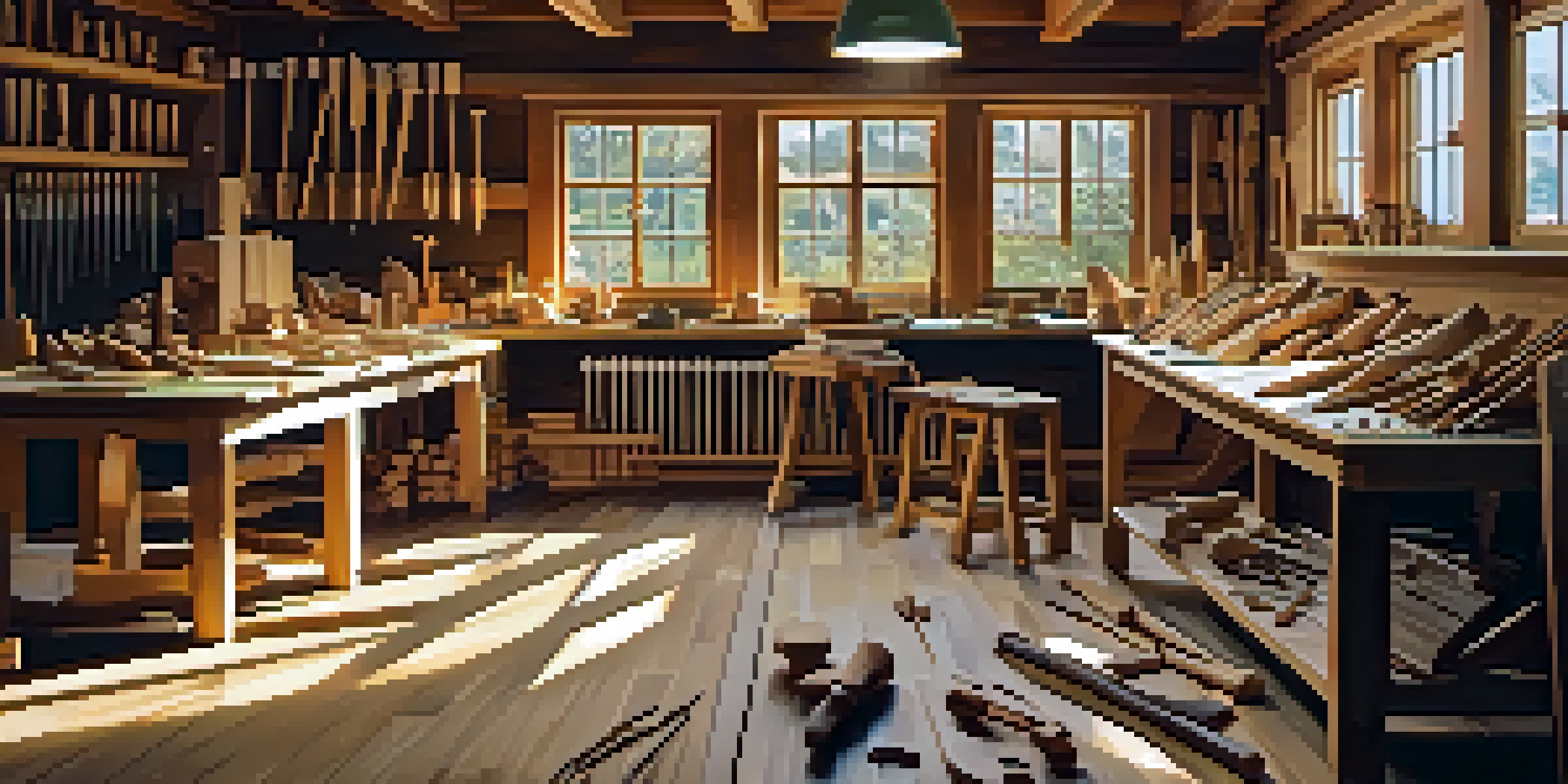Choosing the Right Wood for Carving: A Beginner's Guide

Understanding Different Types of Wood for Carving
When it comes to wood carving, not all woods are created equal. Different types of wood offer various grain patterns, hardness levels, and workability. Softwoods like pine are easier to carve, while hardwoods like oak provide durability and detail.
The best part of woodworking is that you can make something beautiful from nothing, and the journey of creating is just as important as the final piece.
For beginners, it's essential to understand the characteristics of both softwoods and hardwoods. Softwoods are generally more forgiving and allow for mistakes, making them ideal for practice. Hardwoods, on the other hand, are perfect for finished pieces that need to stand the test of time.
Ultimately, the choice of wood can significantly affect your carving experience and the quality of your finished project. So, it's worth taking the time to learn about your options before diving in.
Softwoods: The Perfect Starting Point for Beginners
Softwoods, such as pine, cedar, and basswood, are often recommended for beginners. They're easier to carve and require less effort to achieve smooth finishes. This makes them ideal for those just starting their carving journey.

For instance, basswood is particularly popular among woodcarvers because it has a fine, even grain that holds detail well. It's also relatively inexpensive, allowing you to practice without breaking the bank. Plus, its light color makes it easy to paint or stain later.
Choose the Right Wood Type
Understanding the differences between softwoods and hardwoods is essential for a successful carving experience.
Choosing a softwood can help boost your confidence as you learn the techniques of carving. You'll find that the satisfaction of creating something beautiful is much more attainable when you start with a forgiving material.
Hardwoods: Crafting Durable and Detailed Projects
Once you've gained some experience, you might want to explore hardwoods, such as maple, cherry, or walnut. These woods are denser and more challenging to carve, but they offer stunning results and lasting quality. Projects made from hardwood can become cherished heirlooms.
Woodworking is not just a craft; it's a journey of discovery, creativity, and self-expression.
For example, walnut has a rich, dark color and beautiful grain patterns that make it highly sought after for fine carving projects. Its strength also means that intricate details can be carved without the risk of breakage. However, be prepared for a steeper learning curve.
Transitioning to hardwoods can open up a world of possibilities in your carving journey. While they may require more skill and patience, the rewards often outweigh the challenges.
The Importance of Grain Direction in Wood Carving
Understanding wood grain is crucial for successful carving. The direction of the grain can significantly impact how the wood responds to your tools. Carving with the grain typically yields smoother cuts, while carving against it can lead to tear-out and frustration.
Imagine trying to slice through a piece of fabric: if you cut with the threads, it goes smoothly, but if you cut against them, it frays. Similarly, working with the grain can enhance your carving experience by allowing for more control and precision.
Grain Direction Matters
Carving with the grain can lead to smoother cuts and a more polished final product.
As you select your wood, pay attention to the grain direction. Planning your cuts accordingly will help you achieve cleaner lines and a more polished final product.
Evaluating Wood Quality: What to Look For
When selecting wood for carving, quality matters. Look for pieces that are free of knots, cracks, and warping, as these imperfections can complicate your work. The smoother the surface, the easier it will be to carve and achieve fine details.
Additionally, consider the moisture content of the wood. Freshly cut wood, or 'green' wood, can shrink and warp as it dries. Opt for seasoned wood, which has been dried properly, ensuring stability and uniformity in your carving projects.
Taking the time to evaluate wood quality can save you headaches down the line. By choosing the right pieces, you'll set yourself up for a more enjoyable and successful carving experience.
Tools and Techniques for Different Wood Types
The tools you use can make a significant difference depending on the type of wood you're working with. Softer woods often require simpler tools, like knives and gouges, while hardwoods may call for more specialized equipment, such as chisels or power tools.
For instance, when carving basswood, a simple whittling knife can suffice, allowing for intricate designs with minimal effort. Conversely, when tackling a dense hardwood like maple, you might find yourself relying on chisels to achieve the desired results.
Evaluate Wood Quality
Selecting high-quality, seasoned wood free of imperfections can significantly enhance your carving projects.
Understanding the tools and techniques best suited for each wood type will help you get the most out of your carving efforts. As you gain experience, don't hesitate to experiment with different tools to find what works best for you.
Sourcing Wood: Where to Find Quality Materials
Finding quality wood can sometimes feel like a treasure hunt. Local lumberyards, woodworking shops, and specialty craft stores are excellent places to start. You might also find unique pieces at reclaimed wood suppliers or even local artisans.
Online marketplaces offer a vast selection, but always check reviews and quality guarantees. Buying locally not only supports small businesses but can also give you the chance to inspect the wood in person. This way, you can ensure you're getting the best quality available.

Whether you source wood locally or online, taking the time to find quality materials can elevate your carving projects. Remember, better wood leads to better results!